By Andy Devane.
The artistic legacy of Teatro dell'Opera di Roma is brought to life in a sumptuous exhibition at Palazzo Braschi in Rome
When he became sovrintendente of Rome's opera house in 2013, Carlo Fuortes was “astounded” to discover a lavish but little-known story of opera intertwined with major Italian and international artists whose work had enriched the opera house since it opened in 1880. Fuortes vowed that one day the public would be given a look behind the velvet curtain to learn of this rich heritage and the crafts that sustain it.
The result, four years later, is Artisti all'Opera, a sumptuous exhibition at Palazzo Braschi. It features an impressive list of painters, fashion designers and film directors – including Pablo Picasso, Valentino, Sofia Coppella and William Kentridge – who have collaborated with the capital's opera house over the last 137 years.
History and culture
The exhibition also tells a tale of modern Rome, a tapestry of prevailing artistic and political trends, a mixture of history and culture played out against some of the most beautiful music the world has ever known. The curators, led by Gian Luca Farinelli, had to choose from the Teatro dell'Opera di Roma archive, a treasure trove boasting 80,000 costumes and 11,000 sketches and maquettes.
Lured by the strains of opera music, which alternates room by room, visitors are confronted immediately with a plaster bust of Domenico Costanzi, the entrepreneur and founder of Rome's opera house, peeping out of a wicker basket of props. His self-financed Teatro Costanzi on the Viminal hill was inaugurated in 1880 with a performance of Rossini's Semiramide, in the presence of Italy's king and queen.
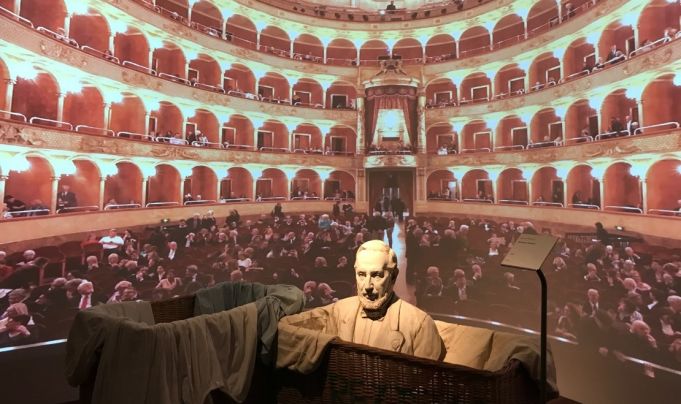
A decade later Rome took the opera world by storm when it premiered Pietro Mascagni's Cavalleria Rusticana, whose runaway success established the theatre's reputation as a shrine to verismo opera. The exhibition features a highly-ornate painted cart donated by Sicily in 1940 on the 50th anniversary of Mascagni's masterpiece. Also on display is the costume worn by Daniela Dessì in a 1995 production of Mascagni's Iris, more than a century after its Rome premiere in 1890.
Next is a room dedicated to Mariano Fortuny and Caramba, the pioneering costume and set designers. Caramba's peacock-feather cloak for Amneris from Verdi's Aida is shown alongside the duo's jester outfit from Verdi's Un ballo in Maschera, both from 1931.
Tosca
Another room is devoted to Giacomo Puccini, whose Tosca received its international premiere in Rome on 14 January 1900. Despite eventually becoming one of the world's most performed operas, Tosca was slated by critics of the day, who decried Puccini's radical departure in style. Visitors to Palazzo Braschi can admire Camillo Parravicini's masterful watercolour design for the Tosca set, dated 1928, as well as the red and emerald gown worn by Maria Callas in 1948.
Picasso
There are reproductions of Picasso's original 29 mixed-media costume designs for Parade, staged by Sergei Diaghilev's Ballets Russes in Rome in 1920. They are shown alongside the finished pieces whose zigzag frills, stripes and circles contain strong cubist elements. Picasso created the designs three years earlier in Rome where he met his future wife, the ballet's first dancer Olga Khokhlova. Incidentally, Picasso's immense canvas back-drop for Parade was on display until late January at Rome's Palazzo Barberini, as part of a separate exhibition.
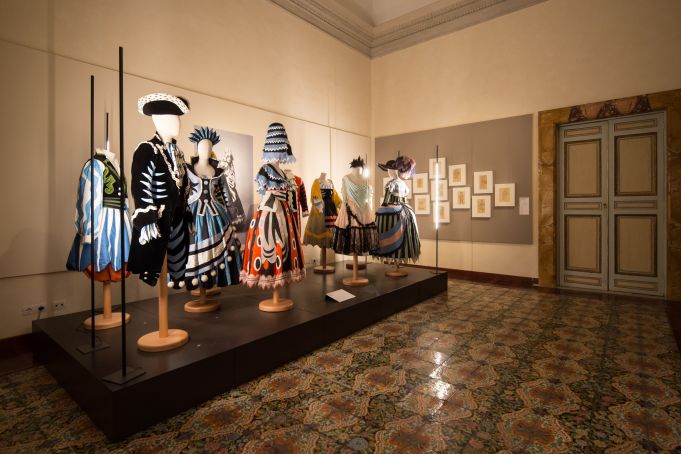
In 1926 the city assumed responsibility for Teatro Costanzi and, following enlargement and restructuring, the newly-rechristened Teatro Reale dell'Opera was inaugurated on 27 February 1928 with a production of Nerone by Arrigo Boito. The set and costumes for the production were designed by Dulio Cambellotti who was among a handful of artists that conformed to a classical approach as part of the fascist desire to broaden opera's mass appeal. Paintings on show at Palazzo Braschi include Cambellotti's small but powerful depiction of Lady Macbeth, from 1933, Felice Casorati's Ecuba with its sun-baked umber shades, from 1941, and the whimsical 1943 designs by Filippo De Pisis for La Rosa del Sogno.
Baths of Caracalla
After emigrating from the Soviet Union in 1923 following several years at the Mariinsky Theatre, Nicola Benois designed 26 productions for the Rome opera house before assuming the role of principal scenographer at La Scala in 1935. His costumes for Aida were used during Rome's summer opera programme in 1939 at the Baths of Caracalla. The open-air summer shows were part of the fascist Teatro del popolo campaign, which was so successful that seating was increased from 8,000 in 1937 to 20,000 the following year. The annual programme endures, with much success, to this day.
Italian Futurist Enrico Prampolini sought to modernise scenography; transforming the traditionally static background into a moving structure, infused with lighting and sound effects. His designs and paintings for the Rome opera house range from 1931 to 1953 and illustrate his innovative theatrical vision. A highlight is the Figurino per gnomo: a mighty, rotund gnome with flowing white beard, parrot on a stick and leaf-motif cloak.
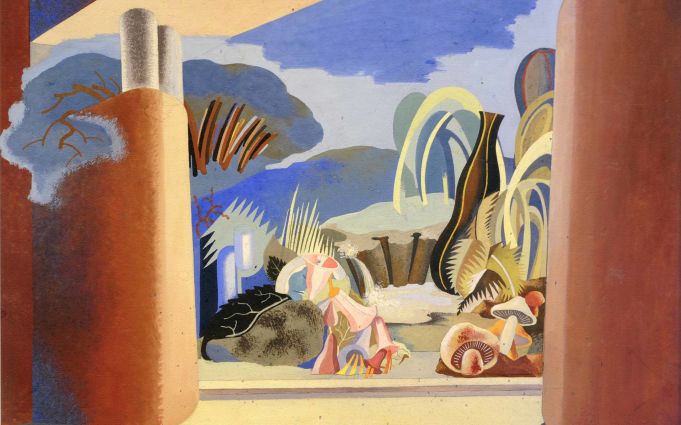
One of the exhibition's more exotic sections is a small corridor occupied by Mirko Basaldella's painted papier-mâché masks, colourful and wondrous, created for Création du Monde in 1955. On the opposite wall his brother Afro's costume designs for Memorie dall'Ignoto (1958-59) surge out of a black background, stark and strong.
De Chirico
Next door a grand hall is dominated by a 15-m long canvas of Othello Act I by the metaphysical master Giorgio de Chirico, alongside more than a dozen of his painted designs for stage and costumes, all dating from 1964. A costume highlight is de Chirico's astrologer outfit for Vittorio Rieti's ballet Le Bal, evoking the Little Prince illustrations of Saint-Exupéry.
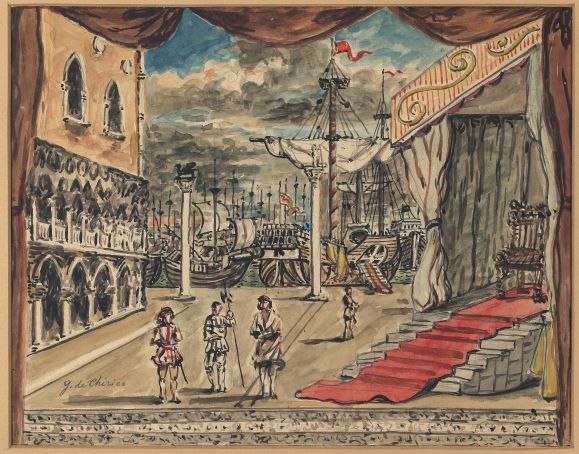
Rome's opera house, which dropped the “Reale” from its title in 1946 following the end of the monarchy, continued to collaborate with major Italian artists in the post-war era. Renato Guttuso's 1966 series of paintings for Stravinsky's The Rite of Spring includes a floral scene with a human skull partially obscured by lush blooms, and a joyous depiction of nudes swirling in a mid-summer dell. Guttuso's costume highlight is arguably the black felt and gold sequins matador-style outfit, worn by Roman baritone Giangiacomo Guelfi in 1970.
Exhibition organisers pay tribute to the celebrated director Luchino Visconti and his 1965 production of Don Carlo, whose ermine-trimmed cape is on display opposite the hulking antler-affixed outfit for Falstaff, directed by Visconti's prize pupil Franco Zeffirelli.
The work of Lila De Nobili, in fabric and on paper, resonates beauty. Blossom pink, fern green and primrose yellow, her costumes for Rossini's Le Roi des Gourmets (1964) include flamboyant headpieces, bonnets and feathered caps, while her 16 miniature paintings are the product of an assured and delicate hand.
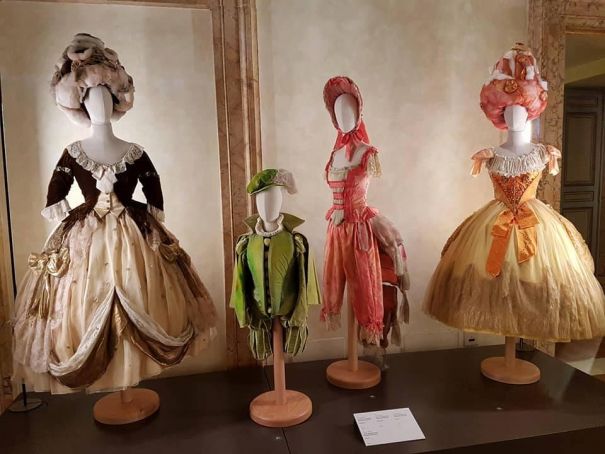
Giacomo Manzù's relatively spare designs for Stravinsky's Oedipus Rex in 1963 are offset by the red, white and black “props-mobile” by American artist Alexander Calder, part of his experimental 19-minute Work in Progress in 1967. Alberto Burri's unconventional backdrop for Tōru Takemitsu's November Steps in 1972 featured the projection of a cracking white surface, while in 1979 artist Mario Ceroli had fun with Puccini's western La Fanciulla del West, designing cowboy costumes for a stage furnished with branches and straw.
Fashion
Since the 1990s the opera house has collaborated with top Italian fashion designers such as Giorgio Armani, reinforcing the Made in Italy brand. An exhibition highlight is the crimson dress designed by Valentino and worn by Francesca Dotto in her role as Violetta in Verdi's Traviata directed by Sofia Coppola in 2016. Not only was Coppola's debut as an opera director a major coup for Rome; it also generated the highest box office takings in the theatre's history.
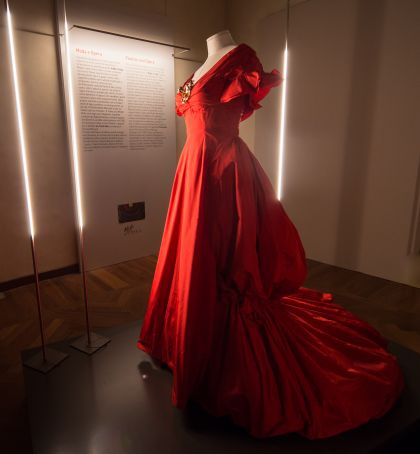
The current stable of artists include Gianluca Toccafondo, an animator and illustrator from San Marino, whose eye-catching Artisti all'Opera posters can be seen around the capital this winter. Toccafondo also has a background in television and advertising, and has created promotional images for Rome's opera house since its 2014 season.
Foreign directors
The exhibition concludes with footage from recent high-profile productions, many of them by foreign directors, including a contemporary reworking of Così fan tutte by Britain's Graham Vick, Benvenuto Cellini with the anarchic touch of American-born Terry Gilliam, and Lulu with more than 500 projected ink drawings by South Africa's William Kentridge.
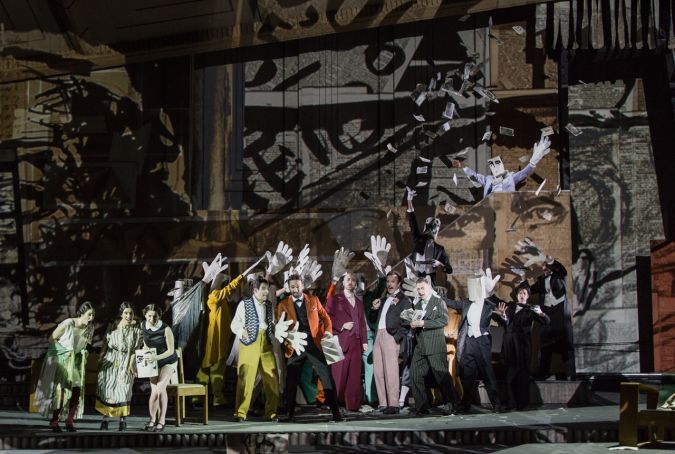
This exhibition at Palazzo Braschi consolidates Italy's excellence in opera and art, allowing visitors to observe up close everything that is normally seen from far away. It also pays homage to generations of craftspeople who succeeded in interpreting artists' elaborate designs into costumes and stage sets. Today's carpenters and tailors work in a three-storey workshop – a former pasta factory at the Tiber end of Rome's Circus Maximus – where their predecessors have worked since the early 1930s.
Since becoming sovrintendente four years ago, Fuortes has not only managed to increase the audience and balance the budget; he has combined the classical traditions of the past with the innovations of today, raising the profile of the capital's opera house to a new international standing.
Artisti all'Opera runs until 18 March at Palazzo Braschi, Piazza S. Pantaleo 10 (Piazza Navona).
General Info
View on Map
Artists at Rome's Opera House
Piazza di S. Pantaleo, 10, 00186 Roma RM, Italy

















